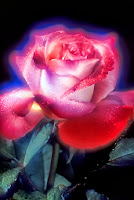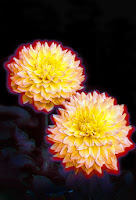Sometimes, I'll come
across a scene that's so picturesque, it almost seems as though there's little
more to do than "point and shoot." Of course, it's never quite that
easy.
I was recently in
Antigua, West Indies, photographing the seascape of Dickenson Bay. Located on
the northwestern coast of the country, Dickenson Bay is a beach known for its
calm seas and white sand. On this particular day, it was further enhanced by
a magnificent sky filled with puffy, cumulus clouds.
A seascape on its own
can look somewhat boring without a little help. It’s always good to anchor it
with an interesting foreground element. In the Caribbean, palm trees are
probably the most clichéd subjects of choice. However, I decided to use parts
of the shoreline in one photo, and a rock jetty adorned with a lone seagull in
the other. I lowered the height of my tripod-mounted camera to place the
horizon just above the seagull's head.
The most invaluable
piece of equipment is a polarizer filter. The effect of this filter is unique –
an effect that (as of yet) cannot be digitally duplicated. Simply by rotating
it, you can remove polarized light from an image, resulting in a reduction of
reflections and glare, and an increase in color saturation. This effect is most
pronounced on a blue sky. For these images, I used colored polarizer
filters – providing all of the aforementioned effects, as well as an enhanced
color scheme. I used a blue/yellow polarizer for the shoreline photo to
emphasize the blue in the sky and to add a warm tone to the sand. The rock
jetty image was better suited to a blue/red polarizer. It enabled me to
saturate the color of the sky, while improving the color of the rocks. I have
other colored polarizers, but these two produce the most realistic-looking
effects.
Probably, the most
important thing to keep in mind when shooting seascapes is the horizon line.
It's absolutely imperative to keep it straight. If you're shooting a busy
forest scene or mountain vista, it may not be too noticeable if the shot is a little
off-kilter. But, seascapes have a very distinct horizon, and even the
slightest slant will throw the entire image off. There are a number of ways to
ensure a straight line. My camera has interchangeable focusing screens. I can
replace the normal split-screen with a grid screen which will overlay the scene
in the viewfinder with a series of horizontal and vertical lines. To do this, I
need to remove the top of the camera and manually insert the screen. Some of
the newer cameras today have virtual horizon lines that can be activated with
the simple push of a button. Any of these methods are much more accurate than
trying to use your naked eyes to line up the horizon.
When nature serves up a
virtual "perfect picture on a platter," it always take a bit of
effort to successfully capture in 2D what you witnessed in 3D.
Submitted by:
F.M. Kearney is a fine
art nature photographer, specializing in unique floral and landscape images. To
see more of his work, please visit www.starlitecollection.com.














